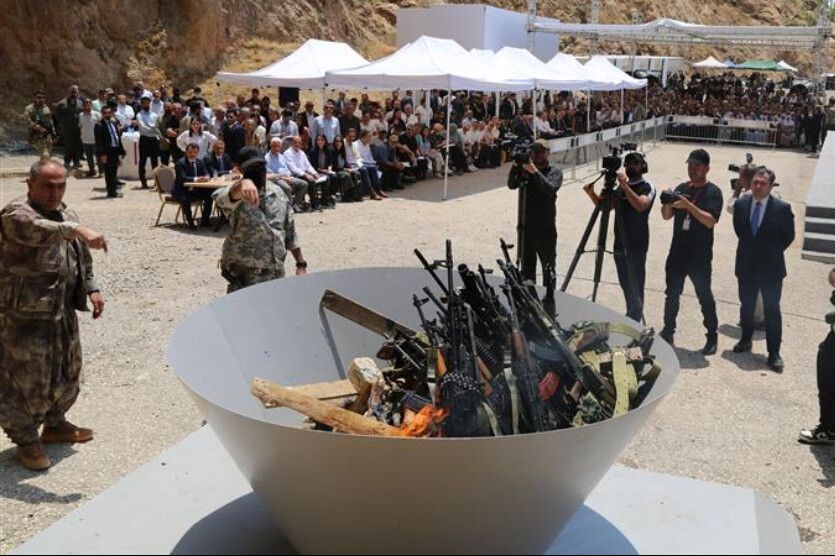What does the US-Turkey agreement on the east of the Euphrates, amount to?

Yusuf Karadaş

Fotoğraf: TSK
Following three days of negotiations in Ankara, the Ministry of National Defence announced that agreement had been reached with the US delegation on the “safe zone” east of the Euphrates. President Erdoğan subsequently remarked, “We are taking a step east of the Euphrates along with the USA. It has been decided to establish an operations centre together with the USA.”
According to the National Defence Ministry’s official website, the agreement comprises, “Adopting with priority precautions taking account of Turkey’s security concerns,” “Establishing a joint operation centre to coordinate the setting up of a safe zone” and “Endeavouring for the safe zone to be a ‘peace corridor’ and for Syrians to be enabled to return to their countries.”
The first comment invited by contemplation of these points is that, rather than a delineated agreement, there exists an agreement lacking clear delineation because, in the agreement reached, all questions and issues which could be clarified within an agreement right up to which areas the “safe zone” will cover, how many kilometres it will be in depth, which forces will be stationed in this zone and who the Syrians earmarked for settlement in this zone are to be and how they will be governed have been left unclarified.
Consequently, however much Erdoğan’s rule tries to portray the agreement reached as a “success” for itself, it is essentially the USA that has won this agreement because, by virtue of this agreement, the USA has at least for now eliminated the threat of unilateral action by Erdoğan’s rule. Second and more importantly, the Trump administration has brought Erdoğan’s rule into a position of agreement with itself in Syria, where it had for a long time run up against Erdoğan’s rule, and brought it closer to its own regional (Middle-Eastern) strategy.
This undelineated agreement shows that negotiations will continue between the USA and Erdoğan’s rule over the east of the Euphrates and regional policies as a whole.
For the time being, we can say that it is impossible, as stated in the text of the agreement, for a result to emerge from these discussions and negotiations that will lead to the assuaging of Turkey’s security concerns because there is no threat to Turkey from the east of the Euphrates, that is the regions under the control of the Syrian Democratic Forces. The policy dubbed “Turkey’s security concerns” is based on eliminating all the achievements of the Kurds in Syria and grabbing the regions in their possession and stationing Free Syrian Army militants here. In other words, Erdoğan’s rule, seeing the Syrian Kurds’ achievements as a threat with regard to the policy it is implementing in the Kurdish problem within its own borders, is intent on a “safe zone” that will destroy these achievements that it perceives to be a threat. The USA, conversely, even if it follows a policy that remains open to restricting the Kurds’ strength and making certain concessions to Turkey, wishes for a “safe zone” and “solution” in which the administration in Turkey and the Kurds can unite, not one that eliminates the Kurds’ achievements.
It is known, however, that blockading Iran lies at the heart of the USA’s regional strategy. As we have stated countless times before, the Trump administration is pursuing a policy aimed at winning over the important regional power of Turkey because ever since the outbreak of the Syria war, Iran, contrary to the calculations of those who started and supported this war, has been the country to increase its strength in the region the most. So, blockading Iran is seen by the Trump administration as being necessary with a view to splintering the anti-US/Israel axis and, over and above this, pushing back Russia and China in the fight over regional spoils.
Under such circumstances, if an agreement is to be spoken of, it must be said that this agreement is based on the USA using the Kurdish problem to bring Erdoğan’s rule, which wishes to solve this problem with warlike policies and is pursuing expansionist aspirations in the region, into alignment with its own regional policy. Such an agreement can be neither to the benefit of Turkey, nor the Kurds, nor the other peoples of the region.
Another important point here, too, is the Syrian administration’s announcement that it views the agreement between the USA and Turkey as being “contrary to international law and an assault on Syria’s sovereignty rights.” Leaving to one side whether it is contrary to international law, an agreement that sidelines the Syrian administration will above all play out in a way that delays the political solution and deepens instability in Syria. However, the Syrian administration’s announcement comes as an important reminder that, in terms of how and the extent to which this unclarified agreement can be implemented, the stance that Russia, the Syrian administration, Iran and also the Syrian Kurds adopt will also be decisive, that of the USA and Turkey notwithstanding.
In conclusion, the agreement in existence is an “agreement” that befits an administration intent on dragging the country into the threat of regional war which it makes into the subject of negotiations with imperialists and thanks to its expansionist aspirations, rather than solving its own Kurdish problem!
(Translated by Tim DRAYTON)
Forwarding to the next article...
10 seconds remaining




Follow Evrensel